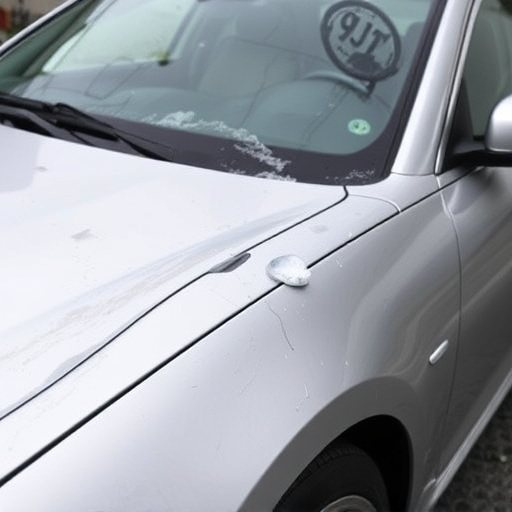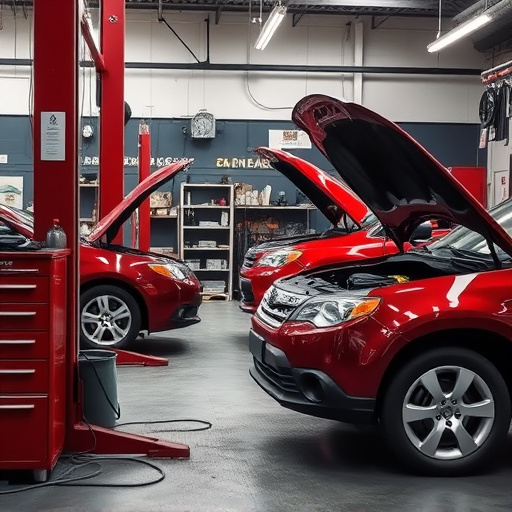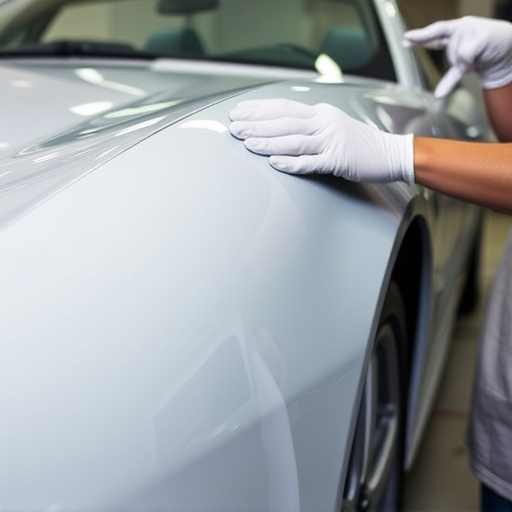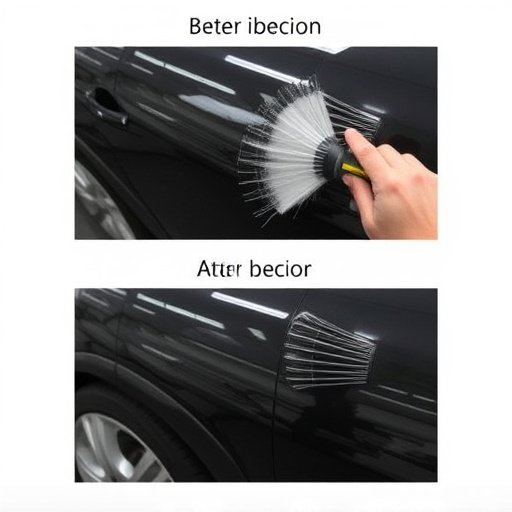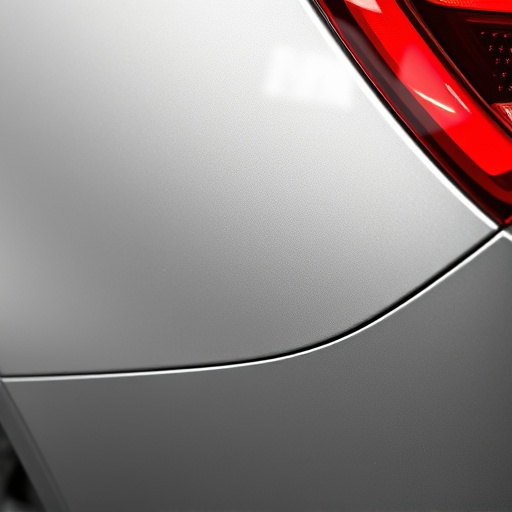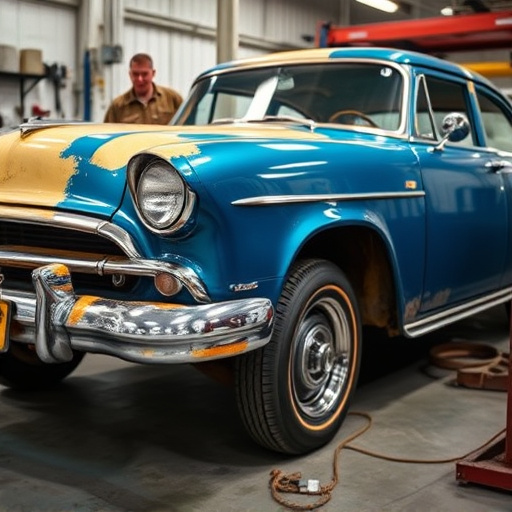Mercedes spot weld bonding is a precision automotive repair technique using specialized equipment and Xentry validation to create strong, invisible bonds, enhancing structural integrity and preserving vehicle aesthetics. This method is ideal for paintless dent repair, minimizing traditional welding scars and offering weight reduction benefits for improved fuel efficiency in modern car models.
Mercedes spot weld bonding is a critical process ensuring structural integrity in automotive manufacturing. This article delves into the fundamentals of this technique, specifically focusing on Mercedes’ proprietary Xentry-validated methods. We explore how these advanced techniques enhance bond strength and precision, contributing to safer, more reliable vehicles. By understanding the benefits and applications across the industry, manufacturers can leverage Mercedes’ expertise to optimize their own spot weld bonding processes.
- Understanding Mercedes Spot Weld Bonding Basics
- Xentry-Validated Techniques: A Deep Dive
- Benefits and Applications in Automotive Industry
Understanding Mercedes Spot Weld Bonding Basics

Mercedes spot weld bonding is a critical process that forms the structural integrity of Mercedes vehicles. It involves precisely joining two or more metal components together using localized heat and pressure to create a strong, durable bond. This technique is essential for auto body shops specializing in paintless dent repair, as it ensures that vehicle panels are securely bonded without compromising the overall aesthetics or requiring extensive repainting.
Understanding how Mercedes spot weld bonding works is key for any skilled technician. The process typically involves using specialized equipment like Xentry-validated techniques to control the amount of heat and pressure applied at specific points, known as ‘spots.’ These spots are strategically placed to create a solid fusion between metal surfaces, effectively minimizing the need for traditional welding methods that can leave unsightly marks. This precision is particularly valuable in vehicle dent repair, allowing for quick and effective restoration without leaving behind any visible signs of damage or scarring.
Xentry-Validated Techniques: A Deep Dive
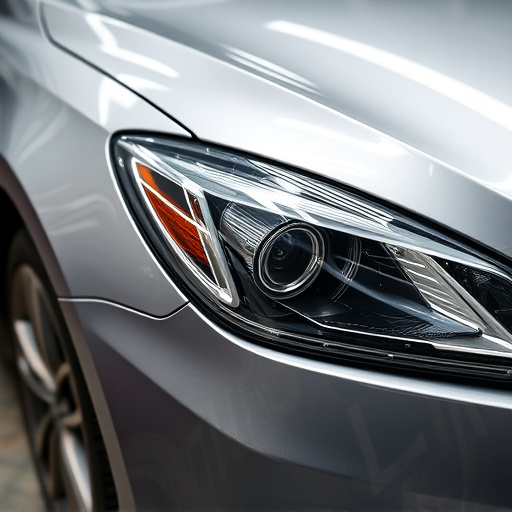
The Xentry-validated techniques for Mercedes spot weld bonding are cutting-edge procedures that have revolutionized car body restoration processes. These advanced methods ensure precise and durable repairs, addressing issues common in fender bender scenarios or scratch repair tasks. By leveraging specialized equipment and software, technicians can achieve seamless integration of parts, replicating the original manufacturing quality.
This deep dive into Xentry-validated techniques highlights their capability to mitigate the visual and structural imperfections often associated with traditional spot weld bonding. Through meticulous programming and validation, these techniques guarantee consistent results, minimizing the need for costly rework. This precision is particularly beneficial in maintaining the overall aesthetic and integrity of the vehicle, ensuring that repairs are nearly indistinguishable from the original car body.
Benefits and Applications in Automotive Industry
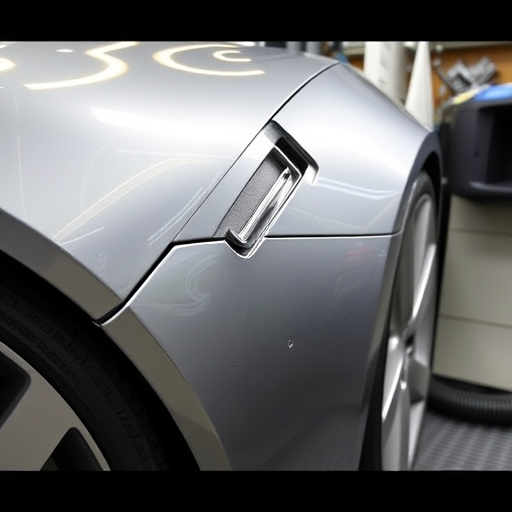
Mercedes spot weld bonding is a precision technique that offers significant advantages in the automotive industry. By utilizing Xentry-validated methods, this process ensures robust and reliable connections between vehicle components, enhancing structural integrity. One of its key benefits is the reduction of weight without compromising strength, which is essential for modern car models aiming for improved fuel efficiency and performance. This method also facilitates intricate design possibilities, allowing for complex body panel assemblies and seamless repairs, particularly in luxury brands like Mercedes.
The applications are vast, from routine manufacturing processes to intricate automotive restoration projects. In cases of car scratch repair or automotive collision repair, spot weld bonding can restore structural integrity and aesthetic appeal. Its precision allows for the reassembly of panels with minimal disruption to the vehicle’s original design, making it a valuable tool in both new car production and specialized automotive restoration work.
Mercedes spot weld bonding, facilitated by Xentry-validated techniques, represents a significant advancement in automotive manufacturing. By understanding the basics and leveraging these validated methods, the automotive industry can achieve stronger, more reliable bonds, enhancing structural integrity and vehicle performance. This innovative approach not only improves production efficiency but also contributes to safer, more durable cars. Mercedes spot weld bonding is thus a game-changer, setting new standards for precision and quality in modern automotive construction.




